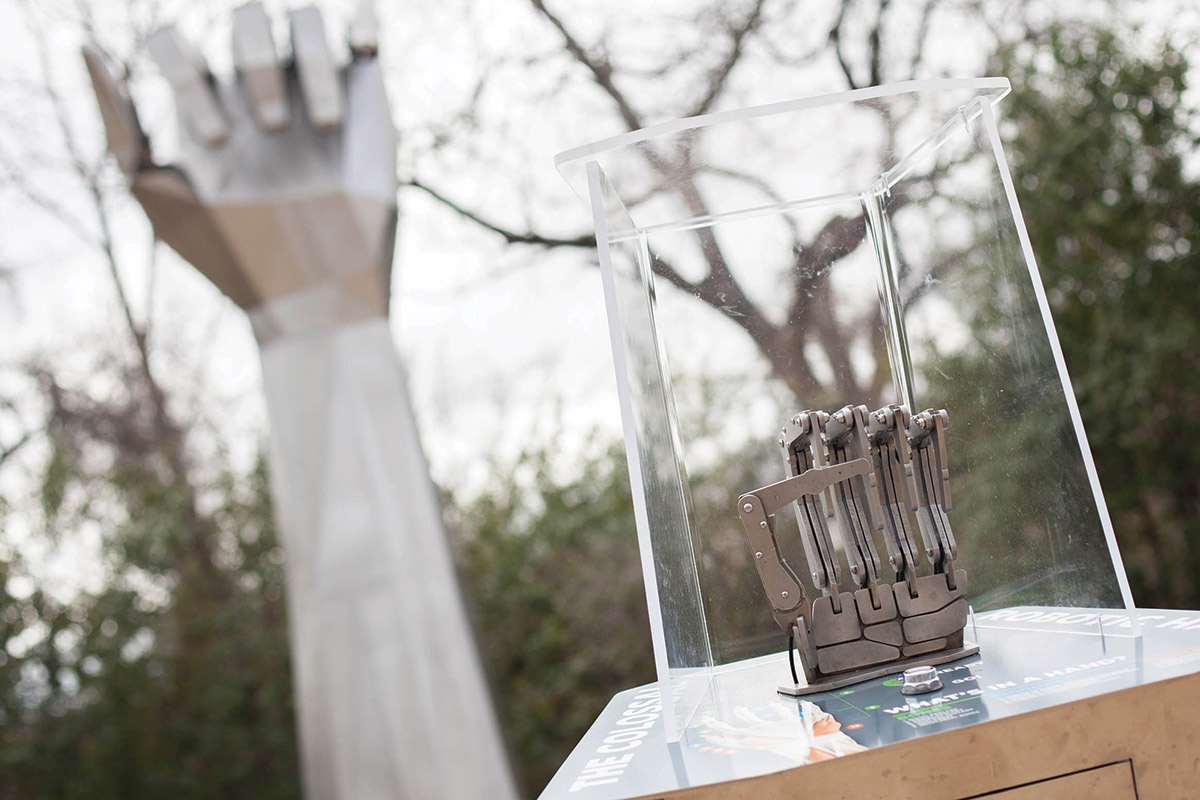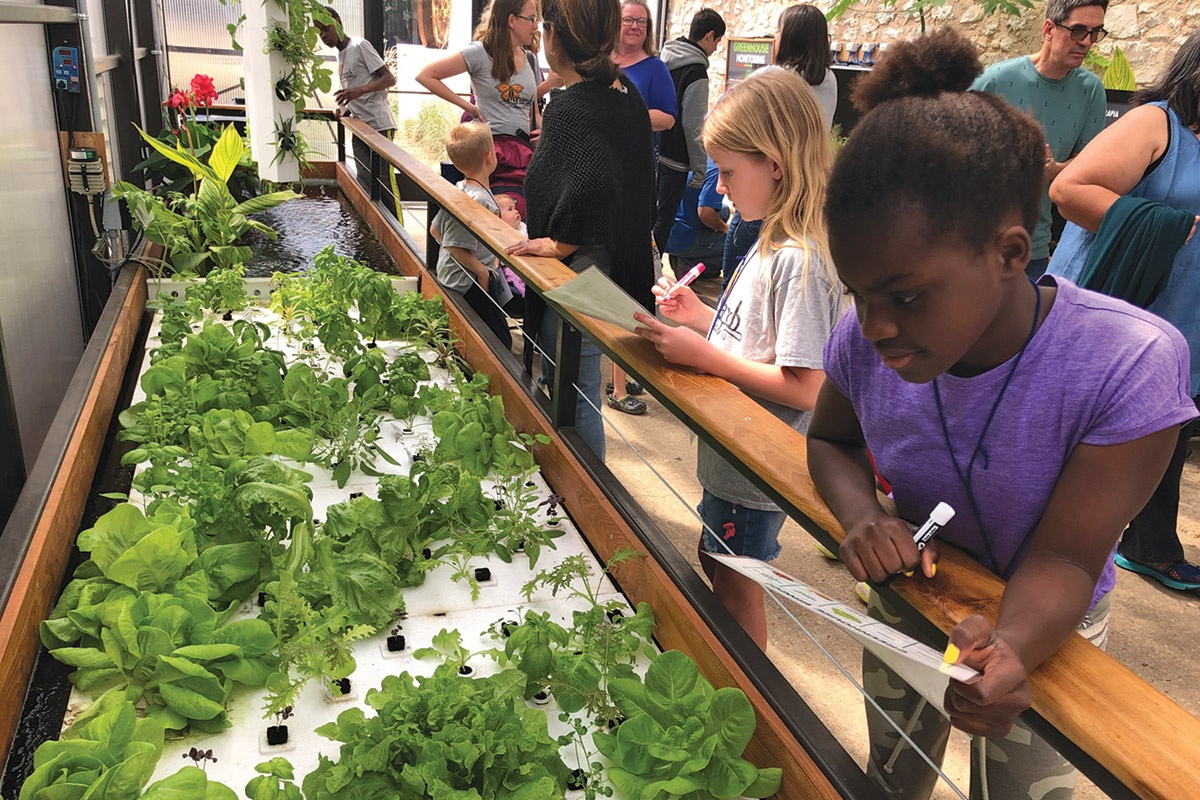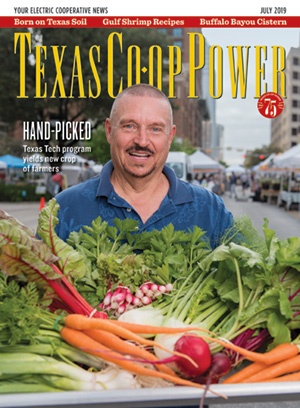Soon after you arrive at the Science Mill in Johnson City, west of Austin, you’re greeted by a wave. It isn’t a friendly staff member saying hello, though you’ll en-counter that, too. Instead, it’s a 30-foot robotic hand made from more than 500 stainless steel triangles. The hand is plenty impressive on its own, but using a remote joystick that mimics the hand, visitors can move the fingers however they’d like, from a peace sign to a “hook ’em Horns” position.
The Colossal Robotic Hand is one of more than 50 exhibits at the Science Mill, which celebrated its fourth anniversary in February. Upon entering, guests can create an avatar using a QR code. That code can be scanned at exhibits to collect badges, the digital equivalent of stamps in a passport.
Unlike most museums, touching and interacting with the displays is encouraged at the Science Mill. From building a motorized race car to playing with an enormous Rube Goldberg contraption, students participate in science, technology, engineering and mathematics activities.
“We want to create that bridge for students, to give them a bigger perspective than just sitting in their class and not being all that excited about what they’re learning,” says Bonnie Baskin, founder and board chair for the attraction. “Most of the exhibits are unique to the Science Mill.”
Perhaps the most distinguishing feature of the Science Mill is the building itself. James Polk Johnson—grandfather of President Lyndon B. Johnson’s cousin—founded a steam and grist mill on the site in 1884. In 1930, George Crofts purchased the mill and converted it to produce agricultural feed.
Since that business closed in 1979, the mill had a variety of uses before Baskin and her team bought it in 2012. A two-and-a-half-year reclamation project resulted in a sterling example of adaptive reuse, transforming a site of industrial agriculture production into an environment designed to inspire the next generation of science leaders.
The history isn’t lost on visitors, either.
“I really like reclaimed spaces,” says Alex Shebar, visiting from Austin. “I’d rather keep history alive in some sort of interesting way, especially if it creates knowledge.”
This year’s anniversary celebration brought an addition: a 1,000-square-foot aquaponic greenhouse. The working eco-system demonstrates how fish, plants and microbes work together to create healthy food. Students can play greenhouse bingo as they explore every crevice of the greenhouse.
“We want kids to have that ‘aha!’ moment where they say, ‘That’s how this works!’ ” says Bob Elde, the facility’s science director and vice chair of the board. “That’s a big reason why we’re doing this.”
“It’s great,” says 5-year-old Townes Walski Pincoffs, showing off her completed bingo card. “I like everything. And I saw a snail!”

The 30-foot robotic hand.
Joel Calvin | Courtesy Science Mill
The Science Mill’s focus on adaptive reuse is one reason it has received support from Pedernales Electric Cooperative. The co-op has contributed to exhibits and awarded the organization one of its community grants.
“We’re helping make dynamic exhibits possible,” says Caroline Porter, PEC community relations coordinator. “The Science Mill brings opportunities to kids all over Central Texas, which really aligns with our values as a co-op.”
Ethan Cook, a freshman at Round Rock High School, thinks the multitude of exhibits helps the Science Mill stand out.
“This one has it all. It’s got biology, engineering, arts—it’s a great variety,” he says.
“The kids can play with everything,” adds Raffaella Ricco, a San Antonio resident with children ages 8, 4 and 1. “It’s not like a typical indoor playground. It’s more focused on technology and learning. The kids are really enjoying it, and I’m enjoying it, too.”
Ricco’s 8-year-old son, Rafael, agrees, giving a big thumbs-up while working on programming a robotic armadillo to move around and make sounds. “I like the technology!” he says. “There are a lot of buttons.”
Since opening in 2015, the Science Mill has hosted more than 157,000 visitors, including 42,000 field trip students—35% of which attend on scholarship. About half the students are from the Hill Country and other rural areas, and about a quarter each are from Austin and San Antonio.
The Science Mill has also hosted 48 STEM career immersion summer camps around South and Central Texas with 1,065 campers—80% of whom attend tuition-free, courtesy of scholarships. When they leave, campers feel more excited about pursuing science, technology, engineering or math careers.
“The mill brings in kids that don’t have access to this kind of experience,” says Anne Hebert, marketing specialist at the Science Mill. “It’s often their first time being hands-on and really getting their wheels spinning.”
What started as a labor of love has grown into a neighborhood gem that brings out curiosity in kids and adults.
“I’ll hear neighbors talking, and they’ll refer to us as ‘our science mill,’ ” Baskin says. “We’ve been accepted, and people are proud to have us here.”
Writer Joey Held has not collected every badge with his Science Mill avatar, but he did make music out of bananas.


